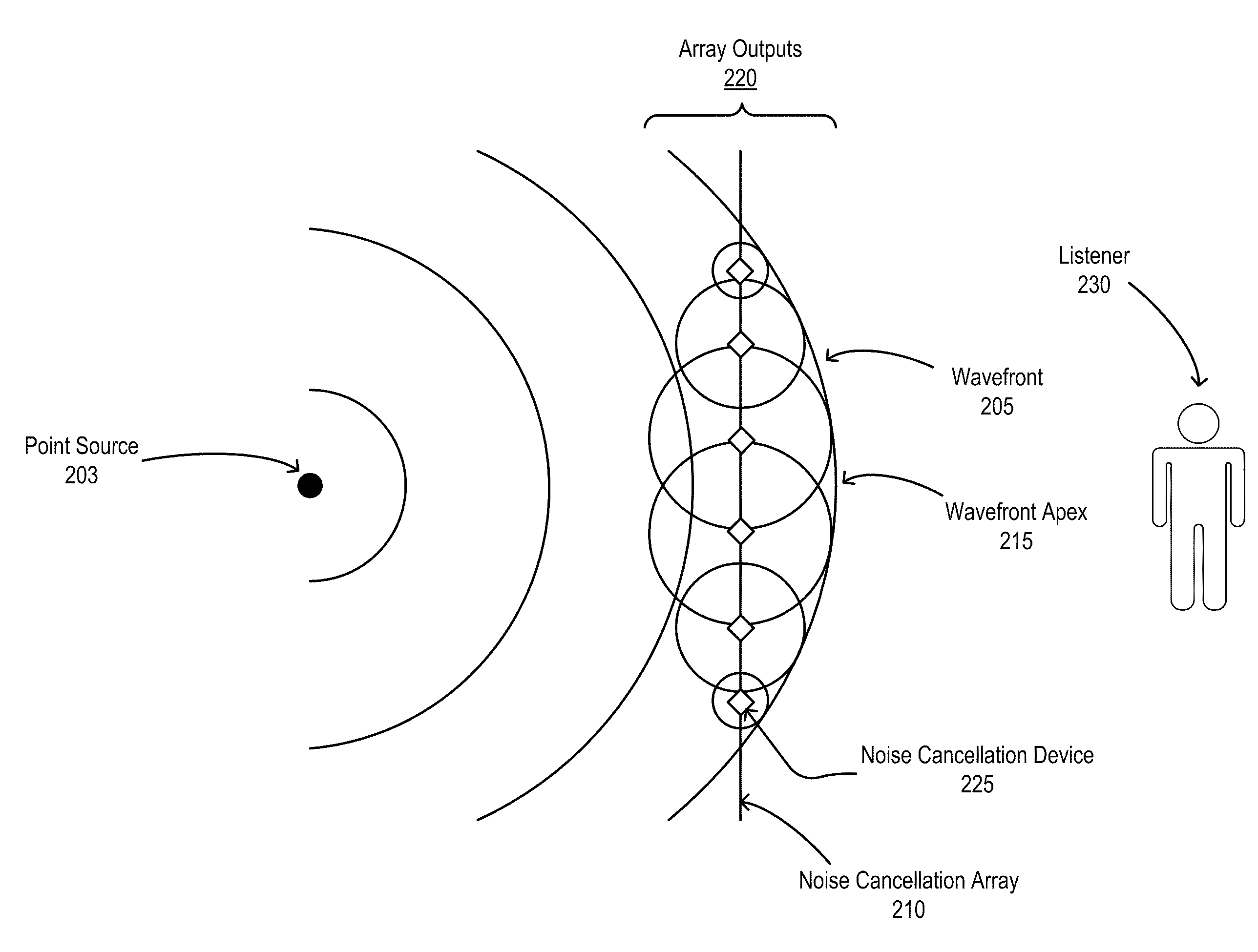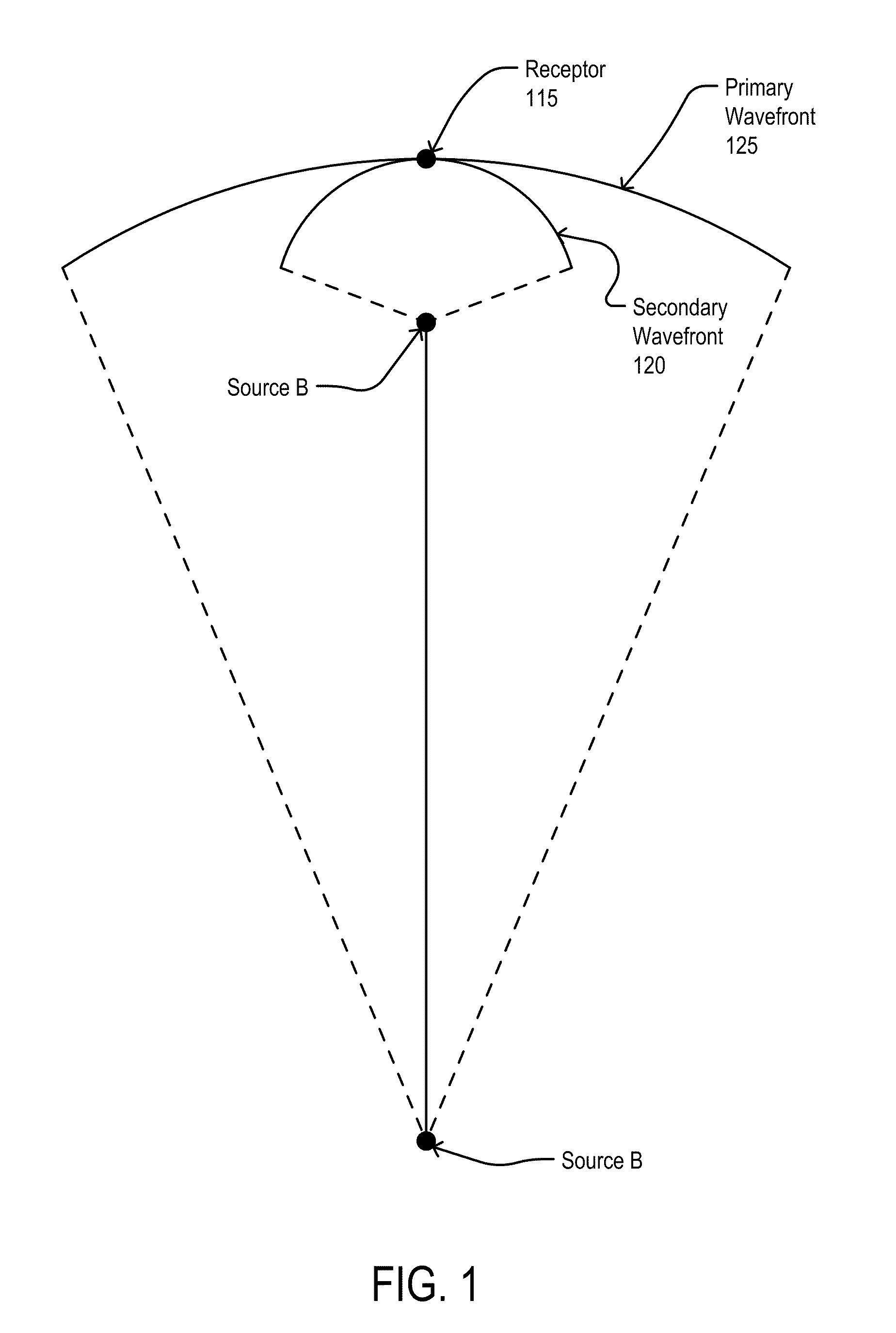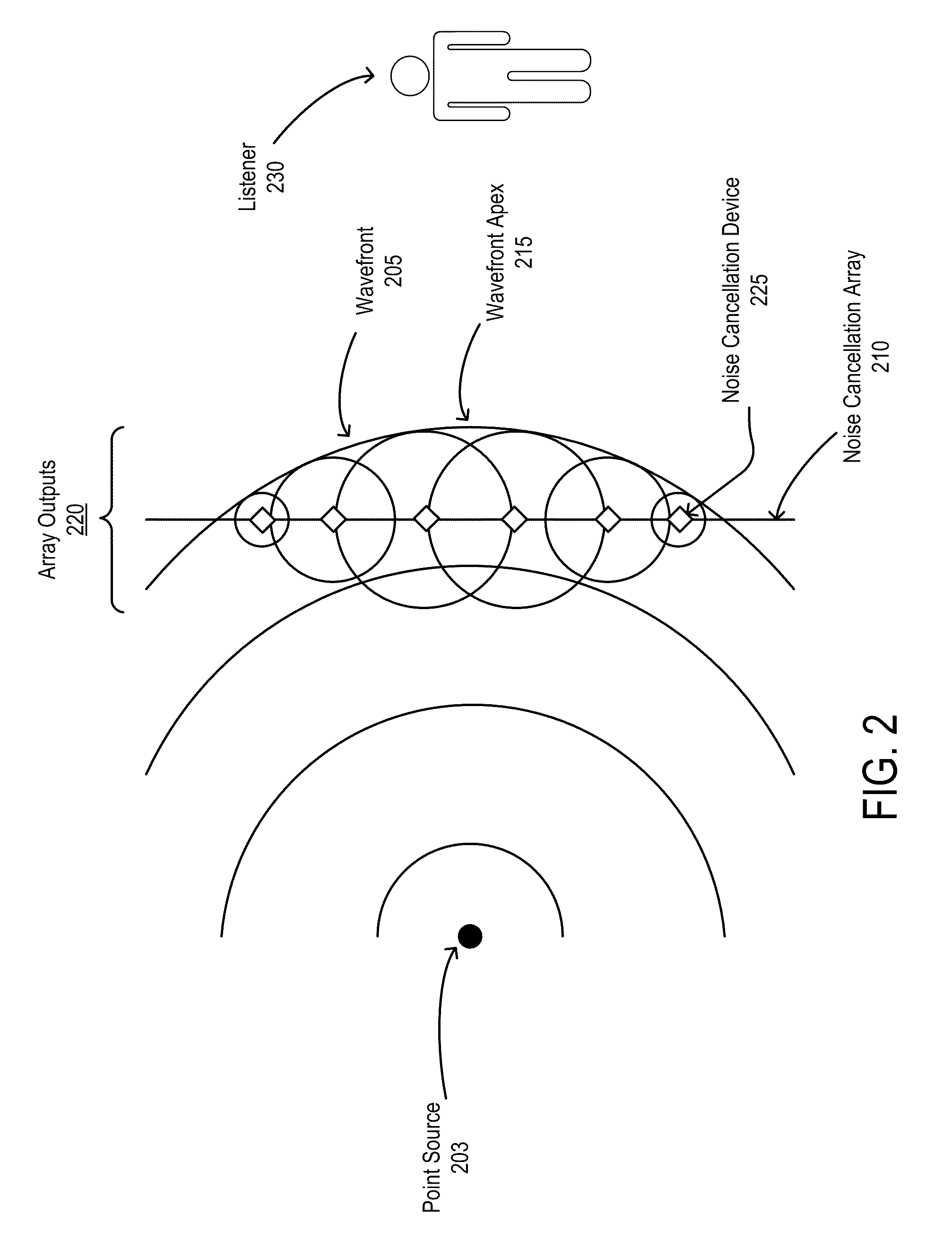Open Air Noise Cancellation
- Summary
- Abstract
- Description
- Claims
- Application Information
AI Technical Summary
Benefits of technology
Problems solved by technology
Method used
Image
Examples
Embodiment Construction
Conceptual Overview
[0028]Active cancelation of ambient noise is provided by an array of individual noise cancelation devices. Among other advantages, the techniques and devices described herein provide active noise cancellation in the time domain and are capable of cancelling an offending noise source in an open air environment. As a basis for explaining the principles of operation for the methods and devices described herein, FIG. 1 illustrates a spatial arrangement of two noise sources, source A and source B, along with a noise receptor 115. Source A generates a primary wavefront 125, and source B generates a secondary wavefront 120.
[0029]If source A is a point source, the primary wavefront 125 travels away from source A with equal amplitude and velocity characteristics in all directions, creating a spherical wavefront centered at source A. The primary wavefront 125 is a portion of such a spherical wavefront. The amplitude of the primary wavefront 125 decreases as the primary wave...
PUM
 Login to View More
Login to View More Abstract
Description
Claims
Application Information
 Login to View More
Login to View More - R&D
- Intellectual Property
- Life Sciences
- Materials
- Tech Scout
- Unparalleled Data Quality
- Higher Quality Content
- 60% Fewer Hallucinations
Browse by: Latest US Patents, China's latest patents, Technical Efficacy Thesaurus, Application Domain, Technology Topic, Popular Technical Reports.
© 2025 PatSnap. All rights reserved.Legal|Privacy policy|Modern Slavery Act Transparency Statement|Sitemap|About US| Contact US: help@patsnap.com



